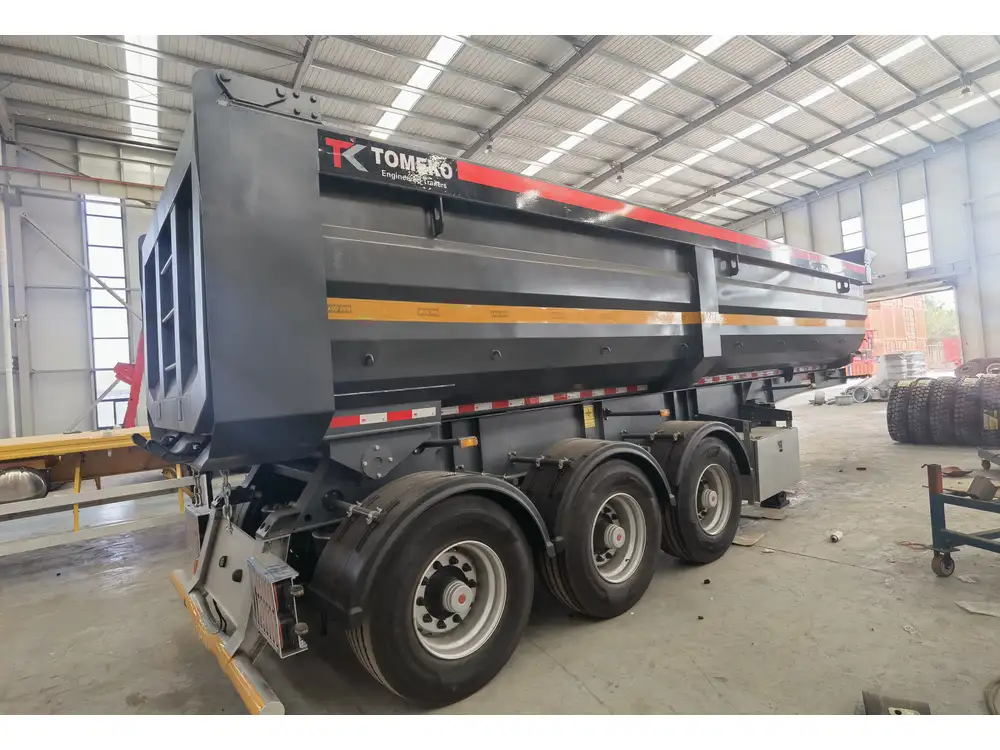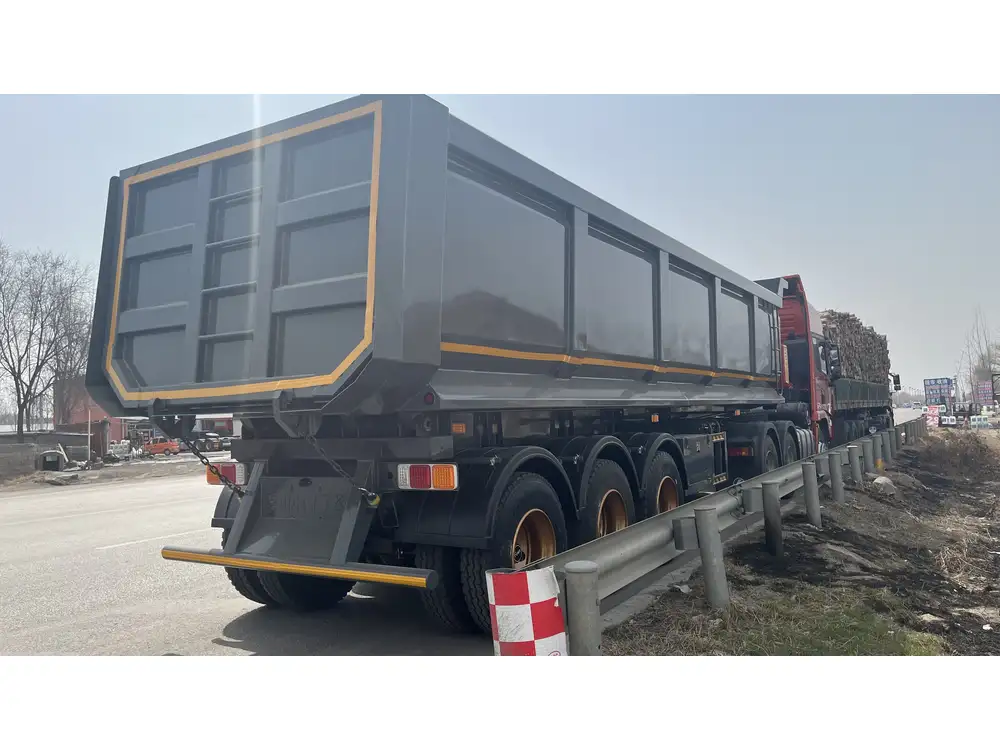Lifting a trailer with a jack for dumping purposes is a task that may seem straightforward but involves several nuances requiring careful consideration. In this article, we will delve into the mechanics of trailer lifting, the types of jacks available, safety precautions, and operational guidelines. By the end, you will have a thorough understanding that not only addresses the question at hand but also equips you with valuable insights to facilitate proper trailer handling.
Understanding the Trailer Lifting Mechanism
Before we explore specific tools and methods for lifting a trailer, it is crucial to grasp the underlying mechanics.
The Anatomy of a Trailer
A typical semi-trailer comprises several components:
- Chassis: The primary supporting structure.
- Axles: The pivot points for the wheels.
- Suspension System: Absorbs shocks to enhance ride quality.
- Coupling Device: Connects the trailer to the towing vehicle.
Each of these components interacts to ensure stability during operation and unloading. Thus, understanding how they work will facilitate more efficient trailer management.

Lifting a Trailer: Basic Principles
When lifting a trailer for dumping:
- The focus is on the center of gravity. If a trailer is not balanced, lifting could lead to instability and potential accidents.
- Ensure the weight distribution is even across the axles to avoid undue stress during lifting.
Can You Lift a Trailer with a Jack?
Yes, you can lift a trailer with a jack specifically designed for this purpose. However, several factors will determine whether it is the suitable method for your situation.
Types of Jacks for Lifting Trailers
Different types of jacks are available, each serving unique functions. Here’s a comparative table of the most common types of jacks used for this purpose:
| Type of Jack | Description | Load Capacity | Pros | Cons |
|---|---|---|---|---|
| Hydraulic Jack | Utilizes hydraulic fluid to lift heavy loads. | Up to 12 tons | High lifting capacity; quick operation | Can be costly; requires maintenance |
| Scissor Jack | Compact design that unfolds to lift. | Up to 2 tons | Lightweight; portable | Limited height; slower lifting speed |
| Bottle Jack | Cylindrical design ideal for confined spaces. | Up to 20 tons | High lifting power; stable design | Requires a stable base; heavy |
| Floor Jack | Low-profile design for easy access. | Up to 3 tons | Fast lifting; good for cars | Less portable; requires clearance |

Choosing the Right Jack
Selecting the correct jack depends on the trailer size, weight, and available space for lifting. For example:
- A hydraulic jack is ideal for larger trailers due to its substantial lifting capacity.
- A scissor jack might be more suitable for lighter trailers given its compact nature.
Safety Precautions When Lifting a Trailer
Lifting a trailer involves inherent risks. Adhering to these safety protocols can mitigate potential accidents:
Inspect the Jack: Before operation, ensure the jack is in good working order. Look for signs of wear, damage, or hydraulic leaks.
Stable Ground: Always lift the trailer on a flat, solid surface that can support the weight.
Use Wheel Chocks: Engage wheel chocks on the trailer’s opposite wheels to prevent unintended movements while lifting.
Beware of Load Limits: Adhere strictly to the manufacturer’s load limits for the jack to avoid failure.
Positioning: Place the jack under the designated lifting points recommended in the trailer’s manual. Avoid makeshift lifting points that could compromise stability.
Clear Area: Ensure that the area around the trailer is clear of personnel and obstacles during the lifting operation.
Step-by-Step Guide to Lifting a Trailer with a Jack
With the right jack and precautions in place, follow this step-by-step guide to safely lift a trailer.

Preparation Phase
Gather Tools: Aside from the jack, ensure you have wheel chocks, gloves, and a safety stand if necessary.
Assess the Load: Check the trailer’s weight and make sure the jack selected can handle it.
Lifting the Trailer
Position the Trailer: Park the towing vehicle clear, ensuring the trailer is stationary. Engage the handbrake.
Place Wheel Chocks: Position wheel chocks to prevent the trailer from rolling.
Locate the Lifting Point: Use the manufacturer’s manual to find recommended lifting points, usually near the axles.
Insert Jack: Slide the jack underneath the trailer at the designated point.
Lift the Trailer:
- Actuate the jack slowly and steadily until the trailer reaches the desired height.
- Keep an eye on the trailer to ensure it remains balanced during the lift.
Secure the Trailer: Once at the desired height, insert safety stands beneath the trailer. This will secure the load and prevent accidental lowering.
Dumping the Load
Perform the Dumping Action:
- If the trailer features a hydraulic lift system, engage it to begin the dumping process.
- For manual dumping, lower the trailer slowly while maintaining stability.
Check Everything After Dumping: After unloading, inspect the trailer for any issues before lowering it back to the ground.

Conclusion: Mastering Trailer Lifting Techniques
To sum up, lifting a trailer with a jack for dumping is not just a mechanical operation; it’s a blend of knowledge, skill, and safety awareness. Understanding the different types of jacks, adhering to safety measures, and employing proper lifting techniques are critical to executing this task efficiently.
Having the right information at your fingertips can enhance your operational efficiency while minimizing risks associated with trailer management. By implementing these guidelines, you can ensure that your trailer handling and unloading process not only meets safety standards but also promotes productivity and efficiency in your operations.
Additional Considerations
- Regular Training: Conduct regular training for all operators involved in lifting and dumping processes.
- Routine Maintenance: Schedule consistent maintenance for your lifting equipment, including inspections and servicing, to ensure optimal performance.
- Compliance: Stay updated with industry regulations and standards concerning trailer operations and safety.
Understanding the complexities involved in lifting trailers can lead to more informed decision-making and better practice. With this knowledge, you can confidently handle trailer operations, ensuring that safety and efficiency remain top priorities.



